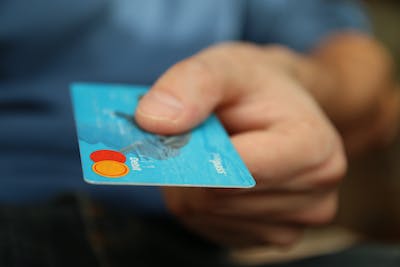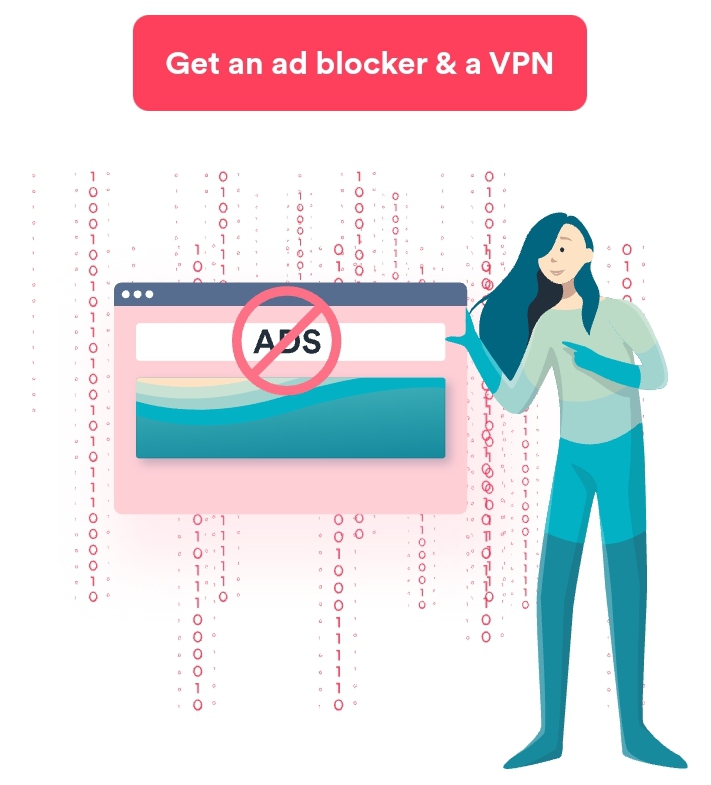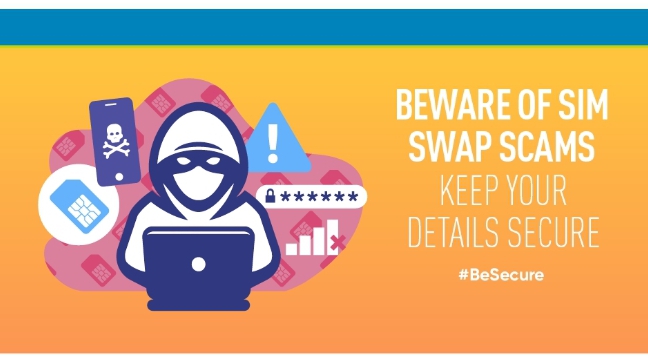Protecting Yourself Against Credit Card Fraud: Strategies, Prevention Tips, and Best Practices |2023|
Introduction to Credit Card Fraud
Credit card fraud is a deceitful practice that involves the unauthorized use of someone else’s credit card or card details for fraudulent purposes.
It is a widespread issue that affects both individuals and businesses, causing significant financial losses, emotional distress, and potential damage to credit scores.
It can take various forms, with fraudsters employing different tactics to carry out their illicit activities.
Understanding these tactics is crucial in protecting yourself against credit card fraud. Let’s explore the most common types of credit card fraud.
Types of Credit Card Fraud
1. Card Skimming and Cloning
One prevalent method employed by fraudsters is card skimming, where they use discreet devices to steal credit card information during legitimate transactions.
These devices, often hidden within card readers or ATMs, capture the card data, including the magnetic stripe or chip information.
With this stolen information, criminals can create counterfeit cards that can be used for fraudulent purchases.
2. Phishing Scams and Social Engineering
Fraudsters frequently resort to phishing scams and social engineering techniques to trick unsuspecting individuals into revealing their credit card details.
They may send fraudulent emails, create fake websites, or make phone calls pretending to be legitimate organizations.
These scams often rely on urgency or enticing offers to persuade victims to disclose sensitive information, such as credit card numbers, CVV codes, or login credentials.
3. Identity Theft and Account Takeover
Identity theft involves the theft of personal information, such as social security numbers, birthdates, and addresses, to assume someone’s identity.
Once fraudsters gain access to this information, they can impersonate the victim and fraudulently access their credit card accounts.
They may change account details, make unauthorized transactions, or even open new accounts using the stolen identity.
Related: Understanding Different Types of Malware and How to Protect Against Them
Common Fraudulent Tactics
1. Card-Not-Present Fraud
Card-not-present fraud occurs when fraudsters use stolen credit card information to make purchases without physically presenting the card.
They exploit online shopping platforms, mail orders, or over-the-phone transactions, where verification is often less stringent.
By providing the stolen card details, criminals can complete transactions, leaving the cardholder to face the repercussions.
2. Unauthorized Transactions and Fraudulent Charges
Fraudsters use stolen credit card information to make unauthorized transactions, either online or in physical stores. They exploit the cardholder’s financial resources to make purchases without their consent.
These fraudulent charges can range from small purchases to large expenses, causing significant financial strain and inconvenience to the victim.
3. Counterfeit Credit Cards
Criminals employ various methods to create counterfeit credit cards using stolen card information or by encoding stolen magnetic stripe data onto blank cards.
These counterfeit cards closely resemble legitimate credit cards, allowing fraudsters to use them for fraudulent transactions.
They may use these cards in physical stores, ATMs, or even to withdraw cash advances.
Protecting yourself against credit card fraud requires proactive measures and awareness. In the upcoming sections, we will discuss effective strategies, prevention tips, and best practices to safeguard your credit card information and reduce the risks associated with fraud.
Red Flags and Warning Signs

It’s important to stay vigilant and be aware of the red flags and warning signs that may indicate potential credit card fraud. Keep an eye out for the following:
1. Unusual Account Activity or Transactions
Regularly review your credit card statements and online account activity to spot any suspicious transactions or unfamiliar charges.
If you notice unexpected purchases, withdrawals, or transfers, it could be a sign of fraudulent activity. Contact your credit card issuer immediately to report the suspicious transactions.
2. Unexpected Calls or Emails Requesting Personal Information
Be cautious when receiving unsolicited calls or emails that request personal or credit card information. Legitimate organizations typically do not reach out to you asking for sensitive details via these channels.
If you receive such requests, do not provide any information and verify the authenticity of the communication by contacting the organization directly using official contact information.
3. Inconsistencies in Billing Statements
Carefully review your billing statements for any errors, discrepancies, or unrecognized merchants. If you come across unfamiliar charges or inconsistencies in billing, it’s essential to investigate further.
Contact your credit card issuer to report the discrepancies and inquire about the nature of the charges. It could indicate fraudulent activity that needs to be addressed promptly.
Strategies for Protecting Yourself
Implementing effective strategies can significantly reduce the risk of credit card fraud. Consider the following measures to enhance your security:
1. Strengthening Passwords and Using Two-Factor Authentication
Create strong, unique passwords for your online accounts. Use a combination of uppercase and lowercase letters, numbers, and special characters.
2. Avoid using easily guessable information like birthdays or names.
Additionally, enable two-factor authentication whenever possible. This adds an extra layer of security by requiring a secondary verification step, such as a unique code sent to your mobile device.
3. Being Cautious with Online Transactions and Sharing Card Details
When engaging in online transactions, verify the security of websites before entering your credit card information. Look for secure connections indicated by “https” and a padlock icon in the browser address bar.
Avoid sharing credit card details through unsecured channels like unencrypted email or unfamiliar websites.
Be mindful of phishing attempts and always double-check the legitimacy of the websites you are using.
4. Regularly Monitoring Credit Reports and Statements
Regularly check your credit reports to detect any suspicious activity. Obtain free annual credit reports from the major credit bureaus and review them for inaccuracies or unfamiliar accounts.
Additionally, monitor your credit card statements closely. Verify that all charges and transactions are legitimate. If you spot any discrepancies, report them to your credit card issuer immediately.
Fraud Prevention Best Practices
Adopting best practices for fraud prevention strengthens your overall security posture. Consider the following practices:
1. Keeping Cards Secure and Using RFID-Blocking Wallets
Keep your physical credit cards secure and never leave them unattended. Carry only the cards you need and keep the rest in a safe place.
Consider using an RFID-blocking wallet or sleeve to protect against electronic pickpocketing, which is the unauthorized scanning of your card information by thieves using RFID technology.
2. Using Secure Payment Methods and Reputable Vendors
When making online purchases, use secure payment methods such as credit cards or trusted payment gateways.
Credit cards often offer additional fraud protection compared to other payment methods. Additionally, only make purchases from reputable online retailers or physical stores with established credibility.
Be cautious of unfamiliar websites or sellers offering deals that seem too good to be true.
3. Enrolling in Fraud Alerts and Notification Services
Take advantage of fraud alerts and notification services provided by your credit card issuer or credit monitoring services.
These services can alert you via email, SMS, or mobile app notifications about suspicious activity on your credit card accounts.
By enrolling in these services, you can receive immediate alerts when potential fraudulent activities are detected.
Prompt notification allows you to take swift action and report any unauthorized charges to your credit card issuer.
Read: how Aura Financial Protection can Protect You from Identity Theft
EMV Technology and Contactless Payments
With advancements in payment technology, it’s essential to understand the security features offered by EMV (Europay, Mastercard, and Visa) chip cards and contactless payments.
These technologies play a significant role in preventing credit card fraud and enhancing transaction security.
EMV Chip Cards and Their Benefits
EMV chip cards, also known as smart cards, feature an embedded microchip that generates a unique code for each transaction.
Unlike traditional magnetic stripe cards, EMV chip cards provide dynamic data that is much harder to counterfeit.
The key benefits of EMV technology include:
- Reduced counterfeit fraud: The unique transaction code generated by the chip prevents fraudsters from creating counterfeit cards with stolen data.
- Increased security for in-person transactions: When using an EMV chip card for in-person transactions, you will typically insert the card into a card reader rather than swiping it. This process, known as chip-and-PIN or chip-and-signature, verifies your identity and adds an extra layer of protection.
- Improved customer experience: EMV chip cards can help to improve the customer experience by reducing the time it takes to make a transaction. This is because the chip card does not need to be swiped, which can be a slow and cumbersome process.
Security Features of Contactless Payments
Contactless payment methods, such as mobile wallets (e.g., Apple Pay, Google Pay) and contactless cards, offer convenience and security.
These methods use near-field communication (NFC) technology to enable fast and secure transactions. Here are some security features of contactless payments:
1. Tokenization
When you add your card to a mobile wallet or use a contactless card, your actual card details are not transmitted during the transaction. Instead, a unique token is generated, acting as a substitute for your card information.
This protects your sensitive data from being intercepted by fraudsters.
2. Transaction Limits:
Contactless payments often have transaction limits, requiring additional verification (such as PIN entry) for higher-value transactions. These limits help mitigate the risk of unauthorized transactions if your card is lost or stolen.
3. Near-field communication (NFC):
Contactless payments use NFC, a short-range wireless technology that allows for secure data transmission between two devices. The distance between the card and the reader is typically limited to a few centimeters, making it difficult for criminals to intercept the data.
4. Dynamic data:
Each contactless transaction uses dynamic data that is unique to that transaction. This data is generated by the card’s chip and changes with each use, making it impossible for criminals to reuse the data to make fraudulent purchases.
5. Encryption:
The data transmitted during a contactless transaction is encrypted, making it difficult for criminals to decipher.
6. Chip technology:
Contactless cards typically have an embedded chip that makes them more secure than traditional magnetic stripe cards. The chip is more difficult to counterfeit and can generate dynamic data that changes with each transaction.
7. PIN verification:
In some cases, contactless payments may require the cardholder to enter their PIN to authorize the transaction. This adds an extra layer of security.
By leveraging EMV technology and using contactless payment methods, you can enjoy enhanced security and peace of mind during your transactions.
What to Do if You’re a Victim of Credit Card Fraud
Discovering that you’ve become a victim of credit card fraud can be distressing, but it’s important to take immediate action to minimize the impact. If you find yourself in such a situation, here’s what you should do:
1. Reporting Fraudulent Charges and Contacting Your Bank or Credit Card Company
As soon as you identify fraudulent charges on your credit card statement or notice suspicious activity, contact your bank or credit card issuer immediately.
Report the fraudulent charges and provide them with all relevant details, such as the transaction dates, amounts, and any other information that can assist in their investigation. Be sure to ask for a confirmation or reference number for future reference.
To expedite the resolution process, it’s recommended to follow up with a written communication, such as an email or letter, documenting the details of the fraudulent charges and reiterating your request for investigation and reimbursement.
Remember, time is of the essence in these situations, as prompt reporting can help limit your financial liability.
2. Freezing or Closing Compromised Accounts
If your credit card has been compromised, you have the option to freeze or close the account. Freezing the account temporarily restricts any new transactions, providing an added layer of protection against further unauthorized activity.
This can be particularly useful if you believe your card hasn’t fallen into the wrong hands but you suspect fraudulent activity.
Closing the compromised account permanently shuts it down and prevents any future transactions. While closing an account can help mitigate the risk of ongoing fraud, it’s important to consider the potential impact on your credit score.
Closing a long-standing credit card account may affect your credit utilization ratio and the length of your credit history, which are factors that influence credit scores.
It’s advisable to discuss the pros and cons with your bank or credit card issuer before making a final decision.
3. Working with Law Enforcement and Credit Reporting Agencies
In cases of credit card fraud, it’s essential to file a police report to establish an official record of the crime.
Contact your local law enforcement agency and provide them with all the necessary details.
This report will serve as evidence of the fraudulent activity and can support your case when dealing with your bank or credit card issuer.
Additionally, contact the major credit reporting agencies, such as Equifax, Experian, and TransUnion, to place fraud alerts on your credit reports.
Fraud alerts notify potential creditors that your identity may have been compromised, prompting them to take extra precautions when processing credit applications.
You may also request copies of your credit reports to review for any other fraudulent accounts that may have been opened in your name.
Regularly monitoring your credit reports is crucial to detect and address any potential identity theft.
Conclusion and Future Trends

In conclusion, credit card fraud is a serious concern, but there are preventive measures and actions you can take if you become a victim.
By promptly reporting fraudulent charges, contacting your bank or credit card issuer, and taking steps to secure your accounts, you can limit the impact of fraud and protect yourself financially.
Looking ahead, emerging technologies continue to shape the landscape of credit card fraud prevention.
Biometric authentication, such as fingerprint or facial recognition, offers an extra layer of security, making it harder for fraudsters to access your accounts.
Machine learning and artificial intelligence algorithms are becoming more sophisticated in detecting patterns and anomalies that could indicate fraudulent activities.
While these advancements show promise, it’s important to remain vigilant and stay informed about new scams and prevention techniques.
Regularly review your financial statements, be cautious with your personal and credit card information, and implement recommended security practices.
By taking proactive measures and staying aware, you can minimize the risk of credit card fraud and safeguard your financial well-being.
FAQs: Protecting Yourself Against Credit Card Fraud
Q1: How can I dispute fraudulent credit card charges?
A: To dispute fraudulent charges on your credit card, follow these steps:
- Contact your credit card issuer immediately and inform them about the fraudulent charges.
- Provide the details of the fraudulent transactions, including dates, amounts, and any other relevant information.
- Request a fraud dispute form or follow their specific instructions for disputing charges.
- File a police report and obtain a copy to support your claim.
- Keep records of all communication with your credit card issuer and any supporting documents.
- Typically, the credit card issuer will investigate the matter and may remove the fraudulent charges from your account.
Q2: What are some preventive measures for credit card fraud online?
A: To protect yourself from this kind of fraud, consider these preventive measures:
- Only provide your credit card information on secure and trusted websites with HTTPS encryption.
- Use strong, unique passwords for your online accounts and enable two-factor authentication when available.
- Be cautious of phishing emails or suspicious websites asking for your credit card details. Avoid clicking on unfamiliar links or sharing personal information.
- Regularly monitor your credit card statements for any unauthorized transactions or suspicious charges.
- Keep your devices and software up to date with the latest security patches and use reputable antivirus software.
- Be wary of public Wi-Fi networks, as they may be vulnerable to data interception. Avoid entering credit card information when connected to such networks.
Q3: What steps should I take if I’m a victim of credit card fraud?
A: If you’re a victim of credit card fraud, follow these steps to mitigate the impact:
- Report the fraudulent charges immediately to your credit card issuer or bank. Notify them by phone and in writing, providing all relevant details.
- Freeze or close the compromised credit card account to prevent further unauthorized activity.
- File a police report with your local law enforcement agency and obtain a copy for documentation.
- Contact the major credit reporting agencies (Equifax, Experian, TransUnion) to place fraud alerts on your credit reports.
- Regularly monitor your credit reports for any additional fraudulent accounts or suspicious activity.
- Consider updating your passwords for all online accounts and enable additional security measures like two-factor authentication.
Q4: What are the best practices for avoiding credit card scams?
A: Follow these best practices to avoid credit card scams:
- Be cautious when sharing your credit card information and only provide it on secure and trusted websites.
- Verify the legitimacy of emails, phone calls, or messages requesting your credit card details before sharing any information.
- Regularly review your credit card statements for any unrecognized charges or discrepancies.
- Keep your credit card secure and avoid lending it to others or leaving it unattended.
- Use secure payment methods like trusted payment gateways when making online purchases.
- Stay informed about the latest credit card scams and fraud techniques by following reliable sources and our news updates.
Q5: How can I protect my credit cards from skimming and cloning?
A: To protect your credit cards from skimming and cloning, consider these measures:
- Inspect card readers and ATMs for any signs of tampering before using them. Look for loose components, unusual attachments, or hidden cameras.
- Cover the keypad when entering your PIN to prevent potential surveillance.
- Use contactless payment methods, such as mobile wallets or chip-enabled cards, which provide added security against skimming.
- Regularly monitor your credit card statements for any unauthorized transactions and report them immediately.
- Consider using RFID-blocking wallets or sleeves to protect your credit card information from being skimmed electronically.
- Be cautious when handing your card to others for transactions and ensure it is returned promptly.
Q6: What are the security measures in contactless payments to prevent fraud?
A: Contactless payments employ various security measures to prevent fraud:
- Tokenization: Contactless payments use tokenization, which replaces the actual card information with a unique token during the transaction. This ensures that the sensitive card data is not transmitted, reducing the risk of interception.
- Transaction Limits: Contactless payments often have transaction limits, requiring additional authentication for higher-value transactions. This helps prevent unauthorized usage if the card is lost or stolen.
- Encryption: Contactless transactions are encrypted, making it difficult for fraudsters to intercept and decode the transmitted data.
- Dynamic Card Verification Value (CVV): Some contactless cards generate a dynamic CVV for each transaction, providing an extra layer of security as the CVV changes for every payment.
Q7: Can I be held liable for fraudulent charges on my credit card?
A: In most cases, consumers are protected from liability for fraudulent charges on their credit cards. Federal law limits the liability for unauthorized credit card charges to a maximum of $50.
However, many credit card issuers offer zero-liability policies, meaning you won’t be responsible for any fraudulent charges.
It’s crucial to report unauthorized charges promptly to your credit card issuer to ensure you’re protected under these policies.
Q8: How can I monitor my credit reports for fraud detection?
A: Monitoring your credit reports is an effective way to detect fraud. Here’s what you can do:
- Obtain free copies of your credit reports from the major credit reporting agencies: Equifax, Experian, and TransUnion. You’re entitled to one free report from each agency per year.
- Review your credit reports for any unfamiliar accounts, incorrect personal information, or suspicious activity.
- Consider subscribing to credit monitoring services that provide regular updates and alerts regarding changes to your credit reports.
- Act immediately if you notice any discrepancies or fraudulent accounts. Contact the credit reporting agencies to dispute the information and place fraud alerts on your reports.






![Does Surfshark VPN Work on iPhone?: Everything You Need to Know [2023]](https://gotocyberprotect.com/wp-content/uploads/2023/10/istockphoto-1506871668-612x612-1.jpg)

